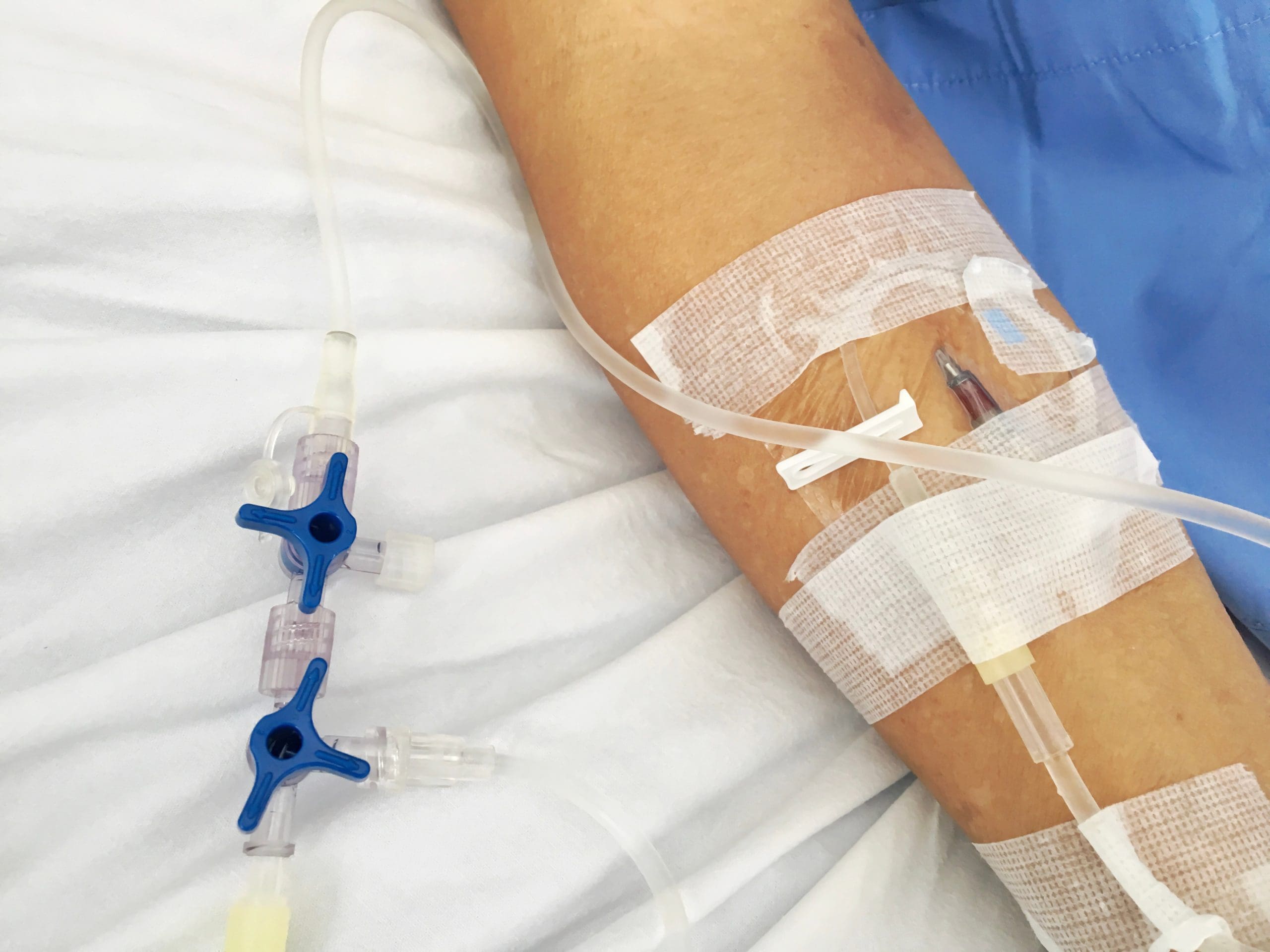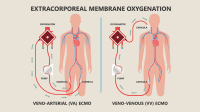INTRODUCTION
INTRAVENOUS (IV) cannulation is one of the most regularly performed clinical techniques on adult patients by registered nurses (RNs) who provide IV skills. According to Bond et al. (2016), anomalies exist in the use of pain controlling approaches during these techniques.
Evidence shows that not all nurses use pain control when inserting an IV, even though the procedure is recommended. This qualitative research was conducted to identify the barriers to RNs using pretreatment analgesic prior to IV insertion more consistently.
PROBLEM OF INTEREST
As commonly mentioned by adult patients, peripheral venous cannulation incites fear and anxiety. Adult patients often voice that this procedure causes considerable pain and discomfort. RNs do not usually offer local anesthesia for cannulation to adult patients who are on general medical units. It is imperative for nurses in practice to understand that for most adult patients, needles promote anxiety and may be recognized as traumatic and unpleasant (Mclenon & Rogers, 2019). In addition, one of the top displeasure scores that adult patients report during hospitalizations is the pain felt by the insertion of IV catheters (Bond et al., 2016). Bond et al. (2016) indicated that less pain was reported by adult patients when IV sites were pretreated with an intradermal solution than when sites were not pretreated. However, even though this is the preferred method and included in many hospital policies, the majority of RNs studied are still not using intradermal localization prior to IV insertion.
Findings of the literature review recommended that nurse practice include pretreatment of IV sites as a marker of high-quality IV therapy nursing care. A compelling number of recommendations were to educate registered nurses so as to change their traditional IV practices.
BARRIER THEMES
Knowledge deficient of hospital policy
The number one barrier as to why registered nurses were not using pretreatment prior to IV insertion was “knowledge deficient”, “I was not aware of this policy until you [the researcher] informed me” (See Table 1).
Pretreatment medication not easily accessible
The second barrier as to why registered nurses were not using pretreatment prior to IV insertion was “pretreatment medication (1% Lidocaine, NSP) not easily accessible”; “would use the intradermal injection pretreatment before an IV insertion if it was readily available on their floor”; “I would be more inclined to use it.”
Lack of hospital inservice educational and training programs
The third barrier as to why registered nurses were not using pretreatment prior to IV insertion was “I would like clinical education on how to complete this skill” (See Table 2).
Multiple sticks
The fourth barrier as to why registered nurses were not using pretreatment prior to IV insertion. Numerous reasons were cited for not offering or not using Lidocaine as an that intradermal injection for pretreatment. Many of the participants felt that “it was not reasonable to tell the patient they would be stuck twice,”; “I do not want to stick my patient twice” (See Table 3).
The discomfort of application of any local anesthetic, including intradermal injection of Lidocaine 1% or Normal Saline with Preservatives (NSP), is less than not using any local anesthetic (Bond et al., 2016).
Traditional pretreatment (no pretreatment)
The fifth barrier as to why registered nurses were not using pretreatment prior to IV insertion was “because we’ve always started Ivs without any pretreatment of intradermal injections.”
The discomfort from IV insertion in adult patients on medical general nursing units can be treated. Intradermal pretreatment before IV insertion should become regular practice and indicator of high-quality IV therapy care (Bond et al., 2016).
Lack of time
The sixth barrier as to why registered nurses were not using pretreatment prior to IV insertion was “I do not have the time.” The average time to complete an intradermal injection is 30 seconds or less. Therefore, patient satisfaction, safety and higher standards of care are beneficial and worth the extra 30 seconds of nursing care. In a study by Yousafzai et al., (2017), the average application time for an intradermal procedure was 35 seconds.
Lack of Administration and Managerial Support –
Another barrier identified was the need for nursing administration and managerial support for the registered nurses to use pretreatment before IV insertions. At least two of the participants said they knew of the current pretreatment but were told by nurse managers not to use the policy. No explanations were given when the researcher asked why?
Intradermal pretreatment before IV insertion should become regular practice and indicator of high-quality IV therapy care (Bond et al., 2016; Dwyer, 2013; Levitt, Ziemba-Davis, 2013; Oman, Kleiner, et al., 2014; and, Santana, 2015).
CONCLUSIONS
Implications for nursing, evaluation for leaders and recommendations include a policy change from traditional pretreatment (no pretreatment) to intradermal pretreatment offered to patients requiring IV insertions; the addition of intradermal pretreatment policies for hospitals which do not presently have a policy in place; the compliance of registered nurses with current hospital intradermal pretreatment policies; the addition of hospital inservice educational and training programs to develop the skills registered nurses need to be successful in performing intradermal pretreatment prior to IV insertion; the usage of an educational tool—simulation or low-fidelity (Munshi, Lababid, Alyousef, 2015), for example IV manikin arm activities to enhance IV intradermal pretreatment skills (Wang, 2011; Knowles,1975); and nursing administrative and managerial support and encouragement for hospital registered nurses to perform intradermal pretreatment before IV insertion procedures (Campbell-Jones, 2021). Do we not want the best for our patients?
References
Bond, M., Crathorne, L., Peters, J., Coelho, H., Haasova, M., Cooper, C., Milner, Q., Shawyer, V., Hyde, C. & Powell, R. (2016). First do no harm: Pain relief for the peripheral venous Cannulation of adults, a systematic review and network meta-analysis. BMC Anesthesiology, 1-11. PMid:27716082 https://doi.org/10.1186/s12871-016-0252-8
Campbell-Jones, V. (2021). Local anesthesia before intravenous cannula insertion: Recommendations for registered nurses in practice. Journal of Nursing Education and Practice, 11(5), 32-39. https://doi.org/10.5430/jnep.v11n5p32
Dwyer V, Rutkowski B. Intradermal lidocaine for peripheral IV insertion: a change in practice. Journal of PeriAnthesia Nursing. 2013; 28(3): 49-50. https://doi.org/10.1016/j.jopan.2013.04.141
Knowles MS. Self-directed learning: a guide for learners and teachers. New York: Cambridge Books; 1975. 135 p.
Levitt, F. C., & Ziemba-Davis, M. (2013). An exploratory study of patient preferences for pain management during intravenous insertion: maybe we should sweat the small stuff. Journal of perianesthesia nursing: official journal of the American Society of PeriAnesthesia Nurses, 28(4), 223–232. https://doi.org/10.1016/j.jopan.2012.11.008
Mclenon J, Rogers MM. The fear of needles: A systematic review and meta-analysis. Journal of Advanced Nursing. 2019 Jan; 75(1): 30-42. PMid:30109720 https://doi.org/10.1111/jan.13818
Munshi F, Lababid H, Alyousef S. Low- versus high-fidelity simulations in teaching and assessing clinical skills. Journal of Taibah University Medical Sciences. 2015; 10(1): 12-15. https://doi.org/10.1016/j.jtumed.2015.01.008
Oman KS, Fink R, Kleiner C, et al. Intradermal lidocaine or bacteriostatic normal saline to decrease pain before intravenous catheter insertion: a meta-analysis. Journal of PeriAnesthesia Nursing. 2014; 38 ISSN 1925-4040 E-ISSN 1925-4059 http://jnep.sciedupress.com
Journal of Nursing Education and Practice 2021, Vol. 11, No. 5 29(5): 367-376. PMid:25261140 https://doi.org/10.1016/j.jopan.2013.12.008
Santana P. Use of subcutaneous local anaesthetic in venous catheters channelling for reducing pain. International Journal of Nursing. 2015; 2(2): 179-186. https://doi.org/10.15640/ijn.v2n2a18
Wang EE. Simulation and adult learning. DM. 2011 Nov; 57(11): 664-678. PMid:22082552 https://doi.org/10.1016/j.disamonth.2011.08.017
Yousafzai, MT., Saleem, AF., Mach, O., Baig, A., Sutter, RW., & Zaidi, AKM. (2017). Feasibility of conducting intradermal vaccination campaign with inactivated poliovirus vaccine using Tropis intradermal needle free injecion sytem, Karachi, Pakistan. Heliyon, 1-9





















